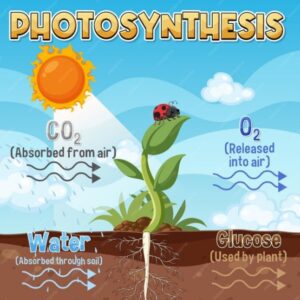 Understanding Photosynthesis (A Comprehensive Overview)
Understanding Photosynthesis (A Comprehensive Overview)
Photosynthesis is a fundamental biological process that powers life on Earth and it is the method by which green plants, algae, and some bacteria convert light energy into chemical energy. So understanding it is crucial for comprehending how ecosystems function and how energy flows through them. Let’s explore the definition, equation, and diagram of photosynthesis in detail.
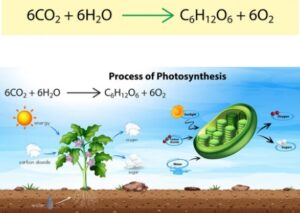 Photosynthesis Definition
Photosynthesis Definition
Photosynthesis can be defined as a process through which plants, algae, and certain bacteria synthesize organic compounds from carbon dioxide and water using sunlight. This process is vital for the production of glucose, which serves as an energy source for plants and, indirectly, for most life forms on Earth. In addition, it releases oxygen as a byproduct, and essential for the respiration of most organisms.
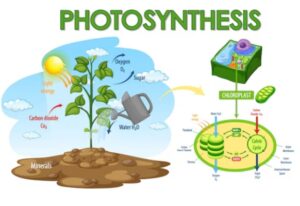 Photosynthesis Equation
Photosynthesis Equation
The photosynthesis equation summarizes the overall chemical reaction involved in this process. So It can be expressed as follows:
\[ 6 \text{CO}_2 + 6 \text{H}_2\text{O} + \text{light energy} \rightarrow \text{C}_6\text{H}_{12}\text{O}_6 + 6 \text{O}_2 \]
In this equation, carbon dioxide and water are converted into glucose and oxygen. The equation illustrates that six molecules of carbon dioxide and six molecules of water react in the presence of light energy to produce one molecule of glucose and six molecules of oxygen. This equation represents the overall chemical process and takes place during photosynthesis.
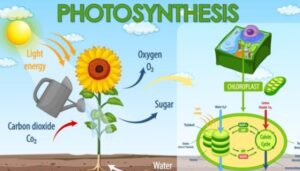 Photosynthesis Diagram
Photosynthesis Diagram
A photosynthesis diagram illustrates the process plants use to convert light into energy. It shows sunlight, water, and carbon dioxide inputs. The diagram highlights chlorophyll’s role in capturing sunlight. It also depicts the production of glucose and oxygen as outputs and it often include chloroplasts, where the process occurs. They help visualize the chemical reactions involved, like the light-dependent and light-independent stages. In educational settings, diagrams simplify complex biological processes for students. They depict how energy transfers through the plant’s cells. Detailed diagrams might include the Calvin cycle and electron transport chain and understanding these diagrams aids in grasping how plants produce food and oxygen. By studying its diagrams, one can better appreciate the vital role plants play in sustaining life on Earth.
Photosynthesis Process
Photosynthesis process converts light energy into chemical energy and plants absorb sunlight through chlorophyll in their leaves. The process begins when light photons hit chlorophyll molecules and this excitation drives the splitting of water molecules. Oxygen is released as a byproduct and simultaneously, energy-rich compounds like ATP and NADPH are produced. These compounds power the synthesis of glucose from carbon dioxide and the process occurs mainly in chloroplasts within plant cells. Plants use glucose as an energy source for growth and development. It not only supports plant life but also produces oxygen essential for animals and humans and this process forms the foundation of the food chain. Without it, life on Earth would be vastly different and understanding this process highlights the importance of plants in our ecosystem.
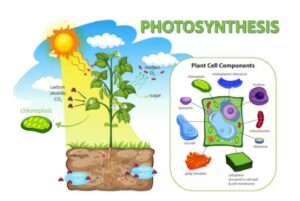 Importance of Photosynthesis
Importance of Photosynthesis
Photosynthesis is crucial for life on Earth. Plants use photosynthesis to convert sunlight into energy and this process produces oxygen and organic compounds. Animals and humans rely on oxygen produced through photosynthesis. Without it, life would not exist as we know it and the importance of it extends beyond plant life. It supports ecosystems by providing food for herbivores and additionally, it helps regulate atmospheric carbon dioxide levels. This process combats climate change by absorbing CO2 and understanding highlights its essential role in maintaining ecological balance. Scientists study it to improve agricultural practices and address environmental issues and by enhancing it, we can boost crop yields and reduce greenhouse gases. The significance of photosynthesis cannot be overstated; it underpins life and environmental health. Its benefits reach far beyond individual organisms and impacting global ecosystems.
Photosynthesis and Climate Change
Photosynthesis plays a crucial role in mitigating climate change and Plants capture carbon dioxide from the atmosphere during it. This process reduces greenhouse gas levels and, by absorbing CO2, plants help regulate global temperatures. Forests and oceans are major players in this carbon absorption. When deforestation occurs, fewer plants absorb CO2, worsening climate change and enhancing it can help combat this issue. Scientists study it to develop methods that boost carbon capture and ncreased it in crops and forests can sequester more carbon. Sustainable practices, like reforestation, enhance it and reduce emission and moreover, healthy plant life supports biodiversity which also impacts climate regulation. Protecting and restoring natural habitats promotes effective photosynthesis. Overall, it is a key tool in the fight against climate change and Its role in carbon sequestration is vital for a stable climate.

3 thoughts on “Photosynthesis”